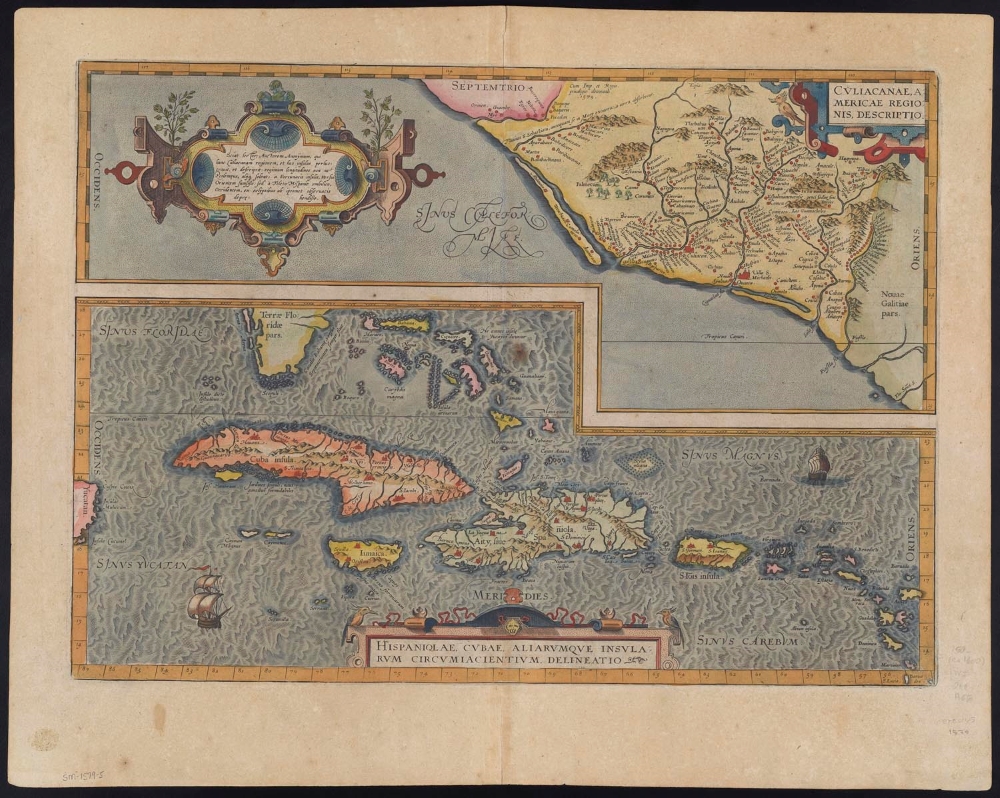
The present primary source is an early map published in 1579 of both the Sinaloa region of Mexico as well as Cuba and the Caribbean. The map was printed on paper and was engraved with copper. The top half of the map details the Mexican coastline by labeling major mountain ranges and cities. The bottom half of the map shows the Caribbean including the southern tip of Florida and all of Cuba. Major cities in Cuba are labeled and small illustrations accompany their names. Cuba’s mountain ranges are also illustrated to show the separation between cities. The map was created solely by Abraham Ortelius, a Flemish cartographer who created the first Atlas and famously proposed the concept of continental drift.
As a European with a passion for cartography Ortelius most likely created and published this map to educate and document current understandings of both regions depicted here. It was created to combine the knowledge of other cartographers at the time and provide an accurate view of Sinaloa and Caribbean. It is important to note that this map was compiled using information from other cartographers at the time. The map depicts Cuba with illustrations, as a developing region of prominence during the 16th century. A good portion of this development at this time would have been correlated to the African slave trade. Spain and Portugal both used massive amounts of slave labor in Latin America at this time leading to economic development. While the map doesn’t depict these developments directly, its focus on the Caribbean at this time, indicates an interest in the region worthy of educating and mapping out. Ortelius likely mapped this region alongside Sinaloa, because of the Caribbean’s interest.
Works Cited
Osher Map Library. “Culiacanae, Americae Regionis, Descriptio.” Accessed February 16th, 2021. https://oshermaps.org/browse-maps?id=44720.
Library of Congress. “Ortelius Atlas: Abraham Ortelius.” Accessed February 16th, 2021. Ortelius Atlas | General Atlases | Articles and Essays | General Maps | Digital Collections | Library of Congress (loc.gov)
